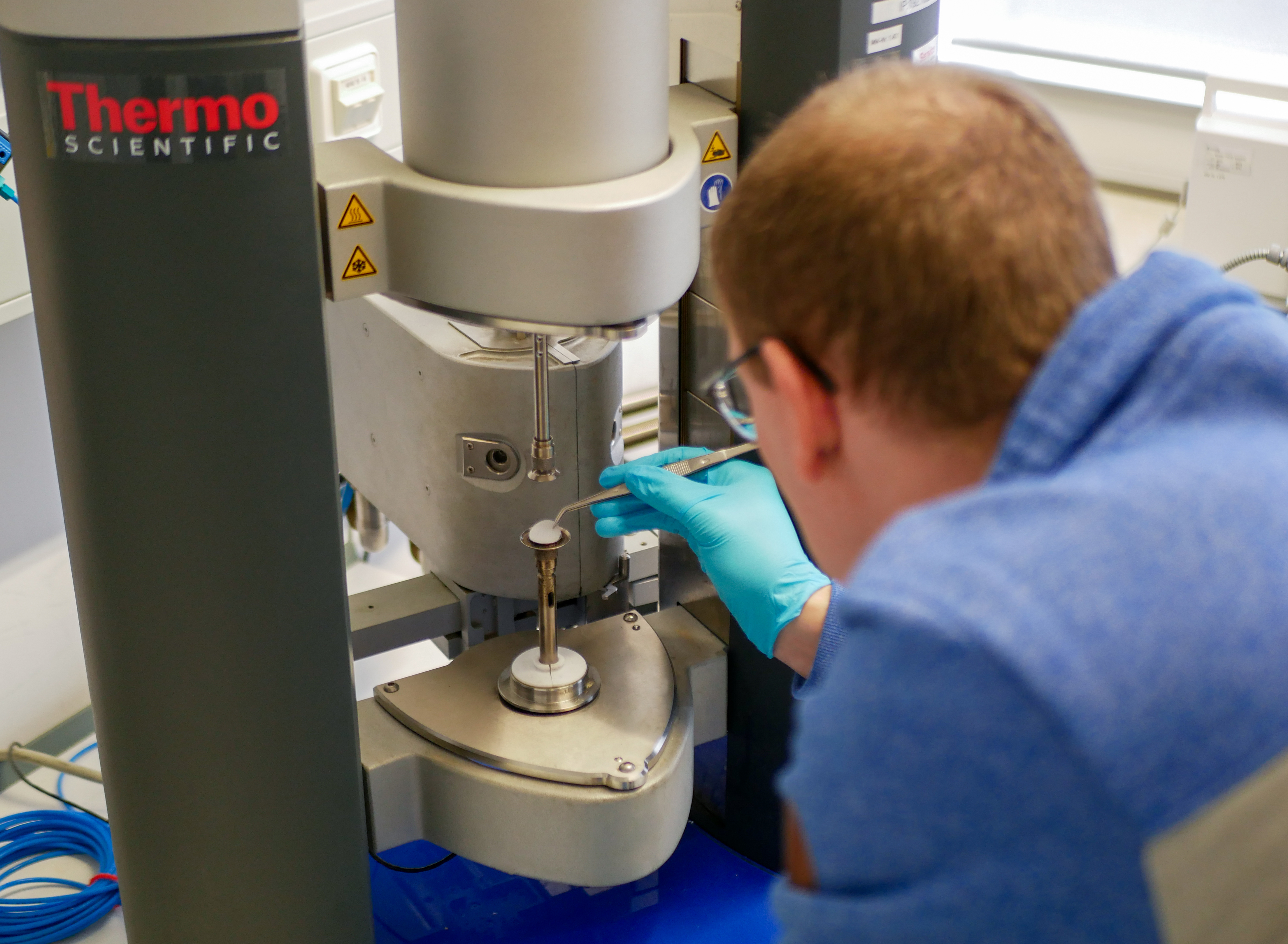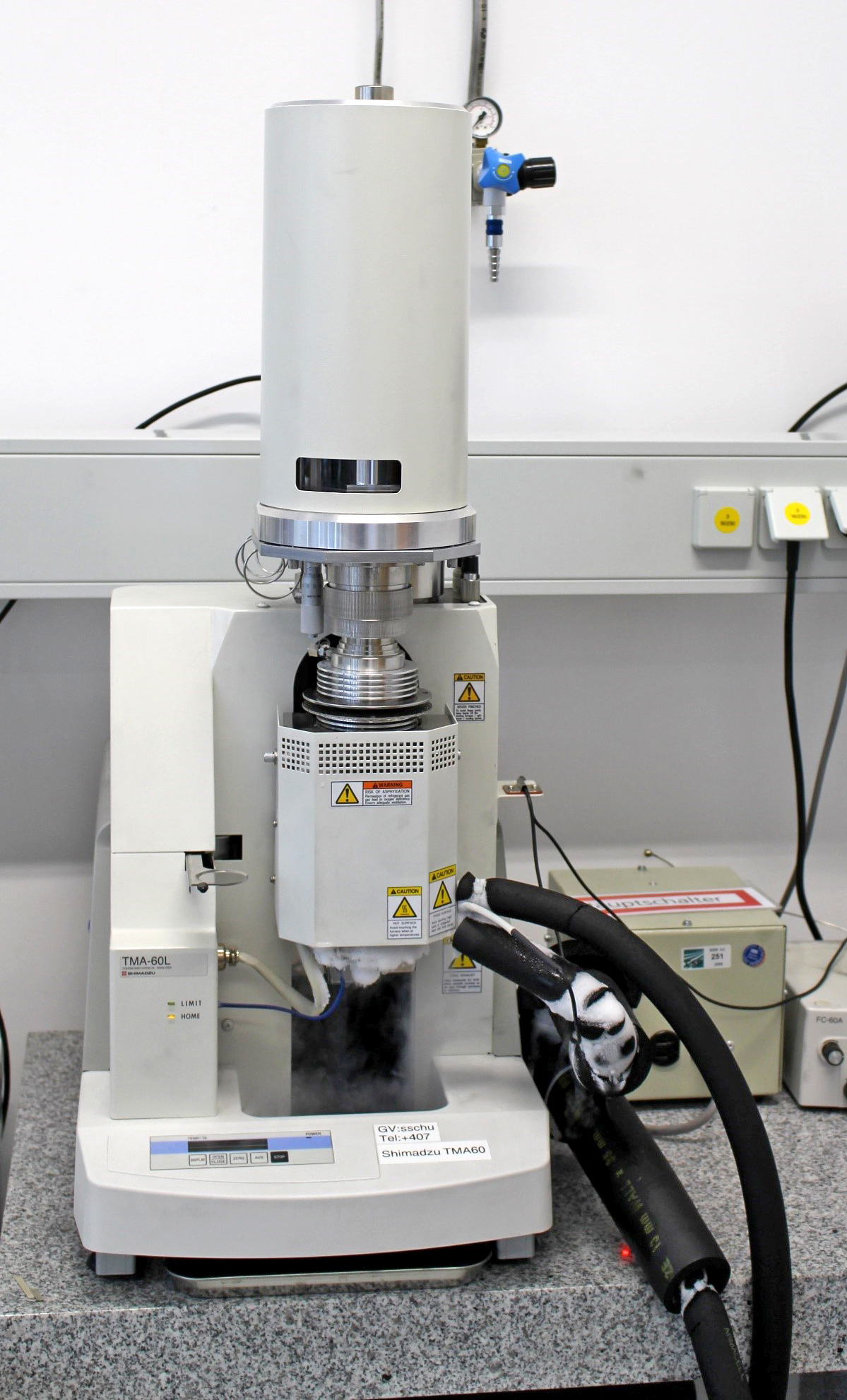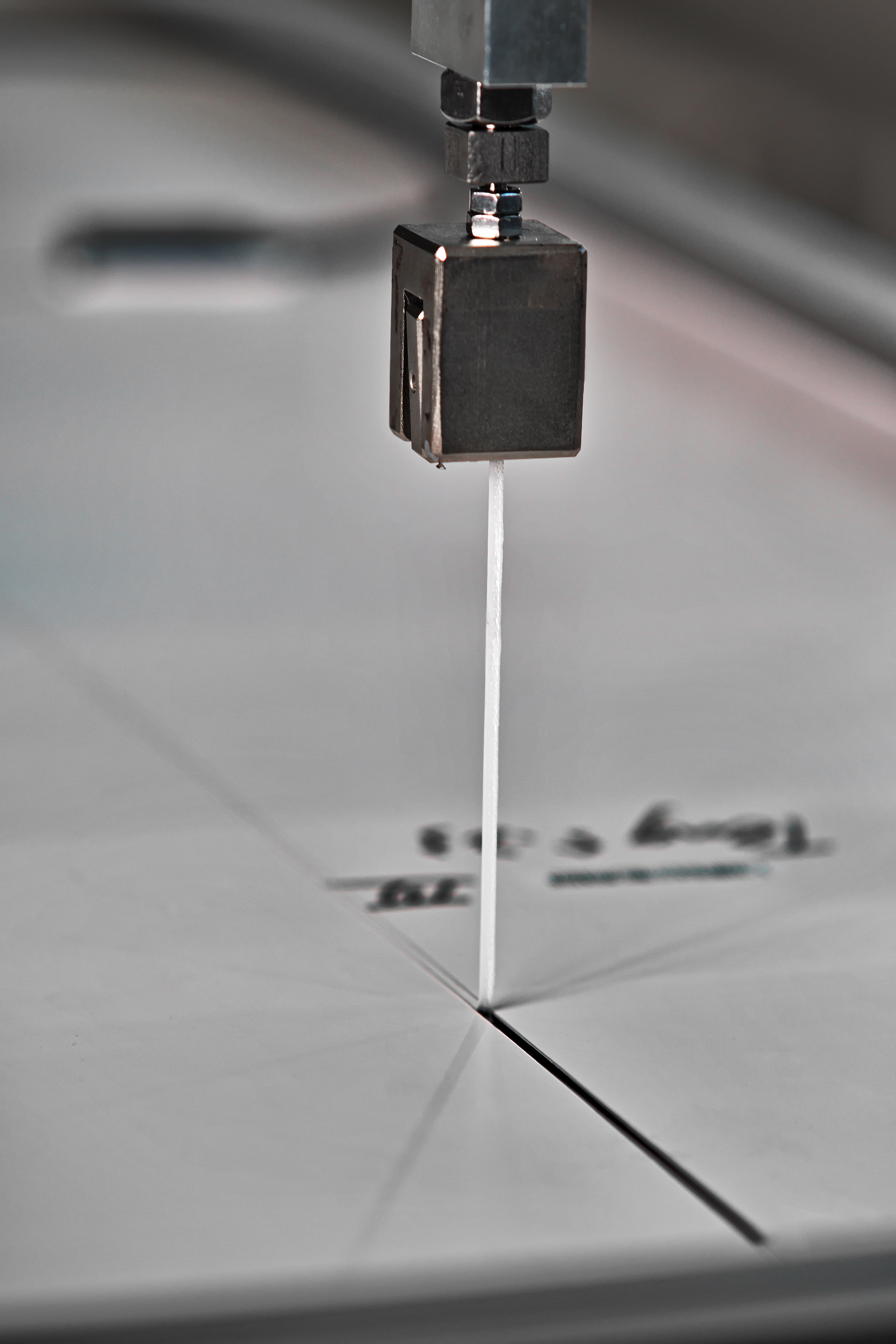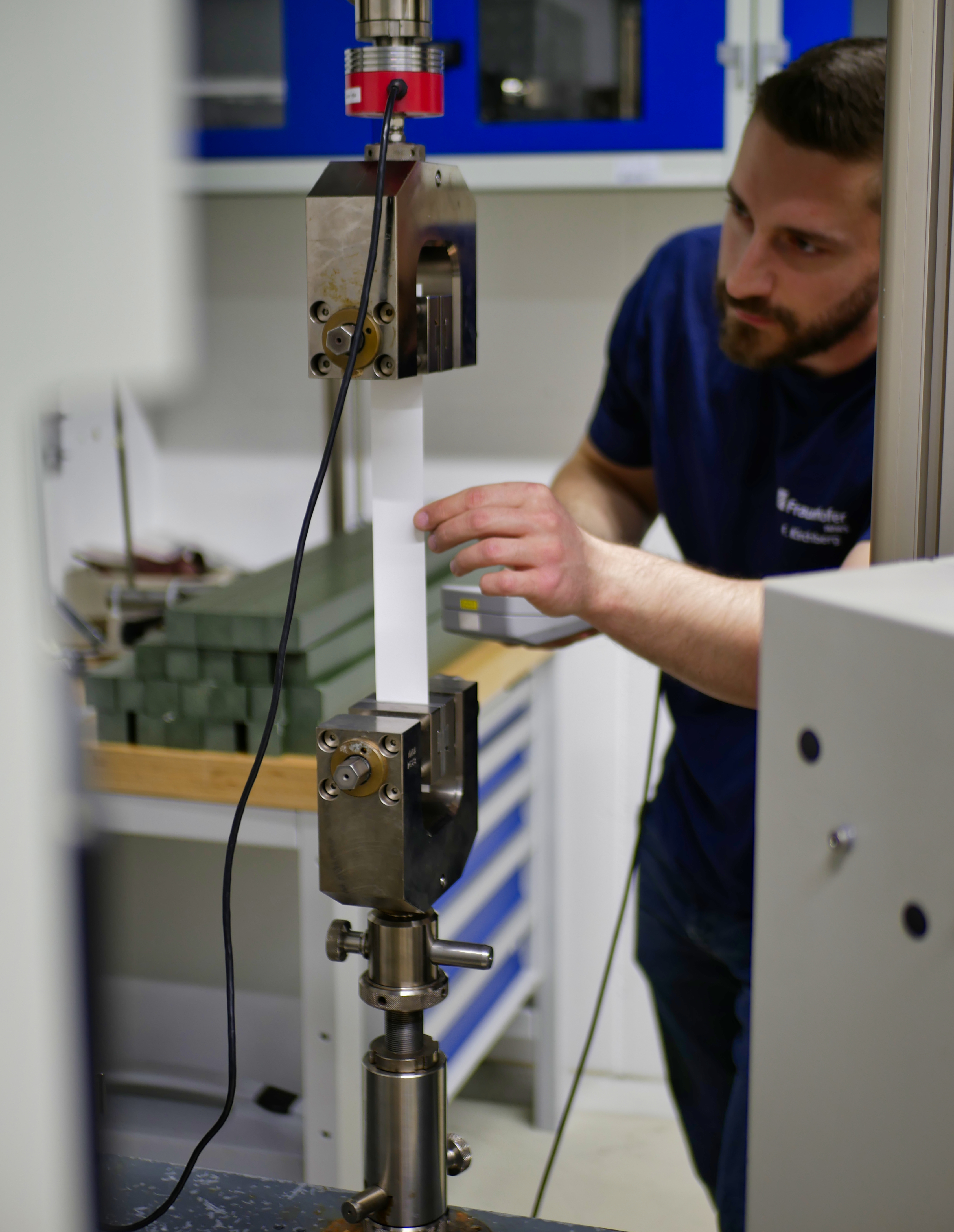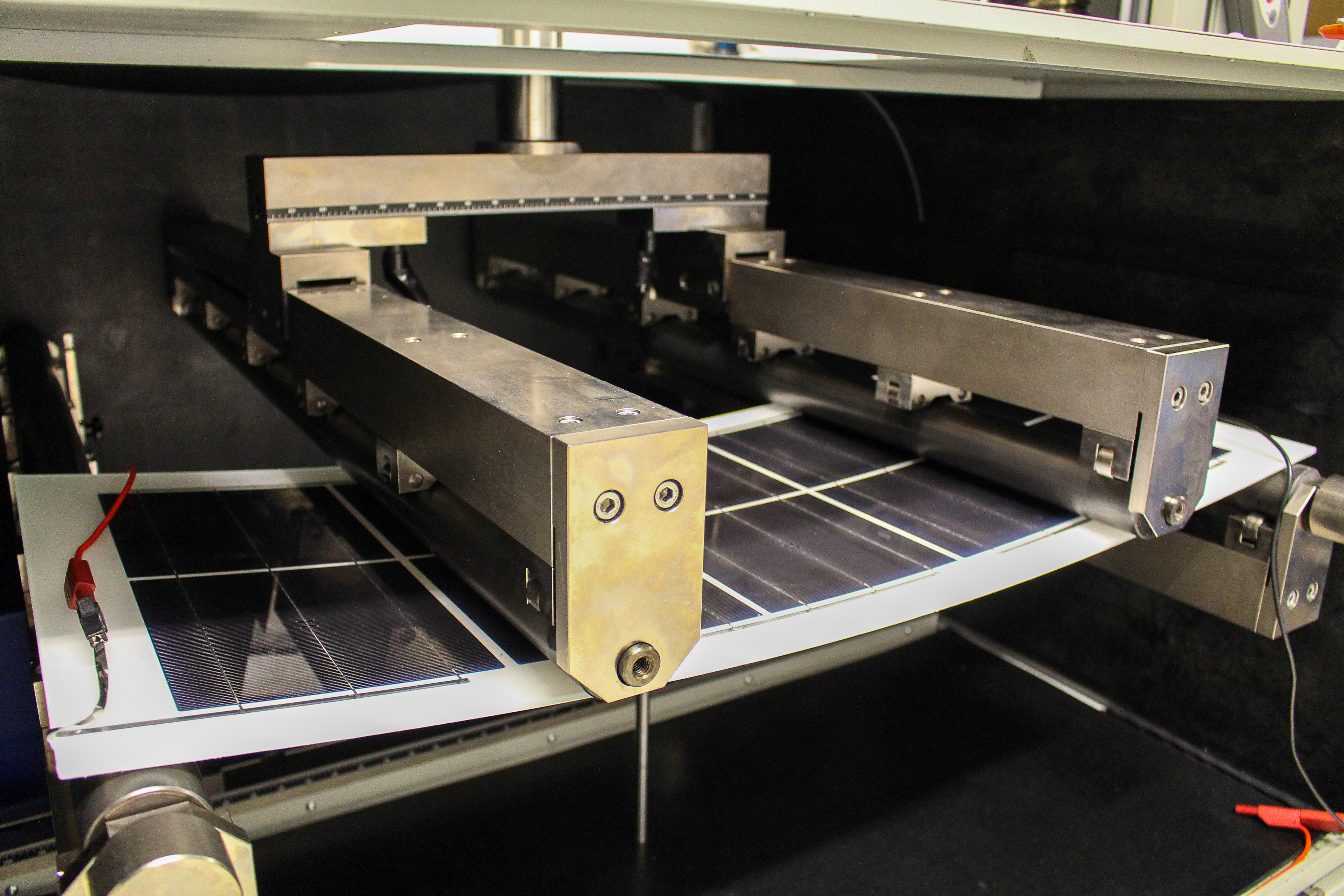DMA: Dynamic Mechanical Analysis
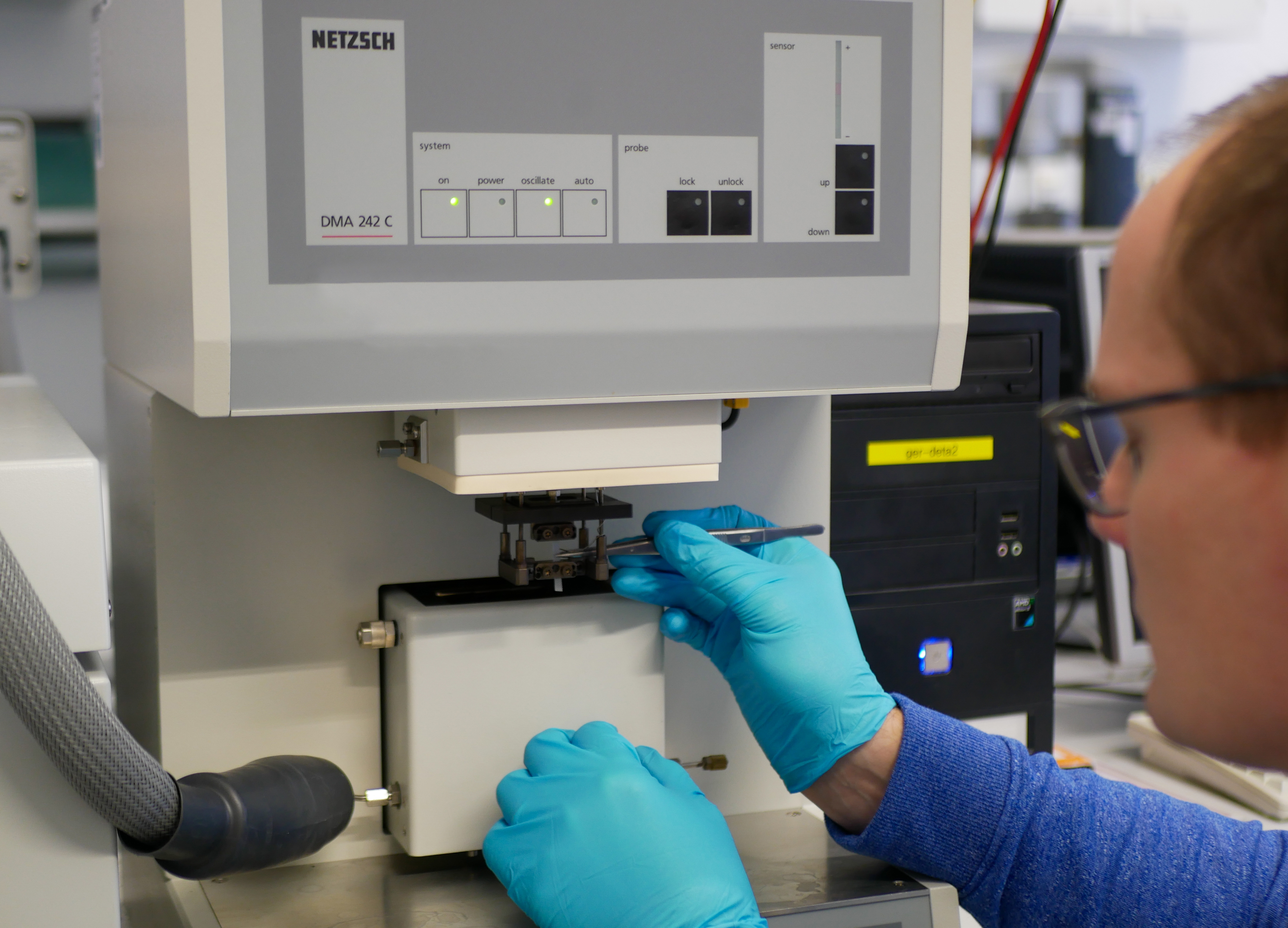
Dynamic Mechanical Analysis (DMA) determines the frequency-, amplitude-, and temperature-dependent mechanical properties of solids.
- Determination of frequency-, amplitude- and temperature-dependent mechanical properties of solids, T: -170°C to 600°C, f: 0.01 Hz to 100Hz
- glass transition temperature
- crosslinking density
- generation of master curves according to time-temperature superposition
- crosslinking kinetics
 Fraunhofer Center for Silicon Photovoltaics CSP
Fraunhofer Center for Silicon Photovoltaics CSP